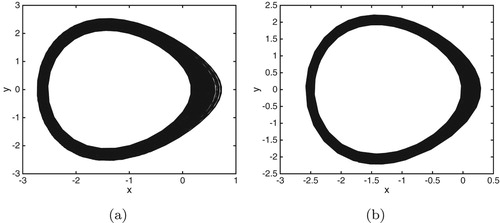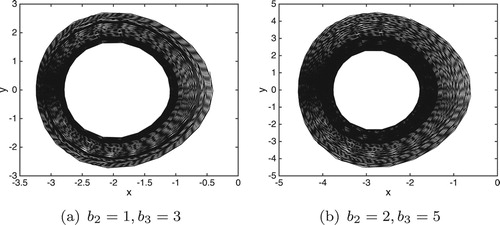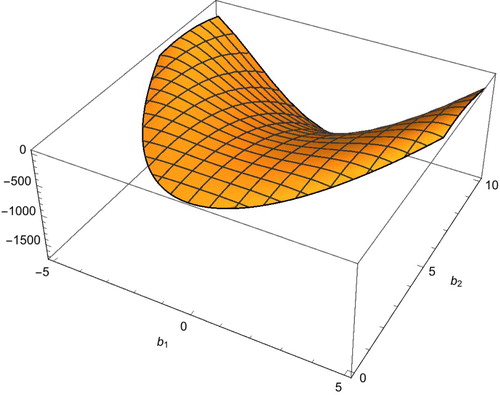Figures & data
Figure 2. Phase portraits of the system (Equation31(31)
(31) ) for
.(a)
. (b)
and (c)

Figure 3. Phase portrait and potential of the system (Equation32(32)
(32) ) for
. (a) Phase portrait. (b) Potential.
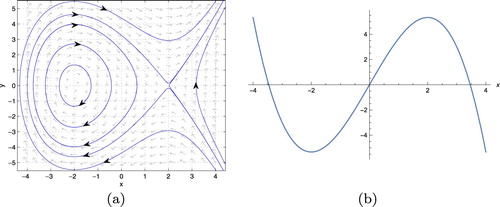
Figure 6. Upper bound for possible chaotic domain due to homoclinic bifurcation with
. (a) Upper surface in
space. (b) Upper bound in
plane with
and (c) Upper bound in
plane with
.
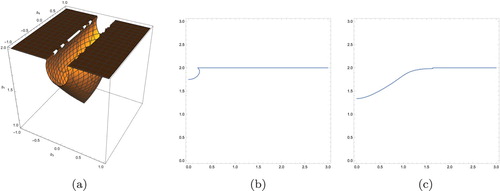
Figure 7. (a) Bifurcation curve for the homoclinic orbits
. Here
and
; (b) Phase portrait for (Equation31
(31)
(31) ) with
and initial value:
.
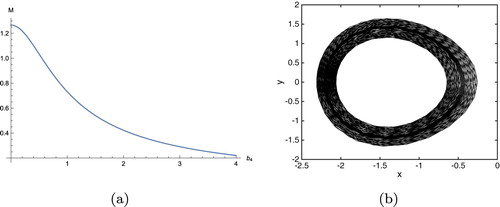
Figure 9. The threshold amplitude of bounded noise excitation for the onset of chaos in system (Equation31
(31)
(31) ) with
. (a)
.
![Figure 9. The threshold amplitude b4 of bounded noise excitation for the onset of chaos in system (Equation31(31) dxdτ=y,dydτ=−c2+x2+ϵ(b1y+xy−4b3sin(Ω1τ)−4b4ξ(τ))+o(ϵ2),(31) ) with b3=0,b1=2,b2=3/2,Ω2=2. (a) σ∈[0,3];(b)σ∈[0,1].](/cms/asset/e2476ddf-70d3-45e7-84b5-247f93f6ddb8/tjbd_a_1718222_f0009_oc.jpg)
Figure 10. Phase portraits of the system (Equation31(31)
(31) ) with
and
. (a)
with initial value:
. (b)
with initial value:
.
